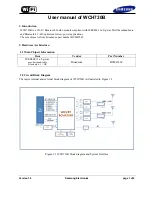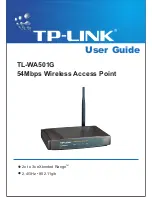
LANCOM L- 54ag Wireless – LANCOM L- 54g Wireless – LANCOM IAP- 54 Wireless
Chapter 1: Introduction
8
EN
1 Introduction
1.1
What is a Wireless LAN?
The following sections describe the functionality of wireless networks
in general. The functions supported by your device are listed in the
table ’What can your LANCOM 54 Wireless do?’
A Wireless LAN connects single terminals (e.g. PCs or notebooks) to a local
network (also LAN –
L
ocal
A
rea
N
etwork). In contrast to a conventional LAN,
communication takes place via radio links rather than via network cables. This
is the reason why a Wireless LAN is also called a
W
ireless
L
ocal
A
rea
N
etwork
(WLAN).
All functions of a cable-bound network are also available in a Wireless LAN:
access to files, servers, printers etc. is as possible as the connection of individ-
ual stations to an internal mail system or to the Internet access.
The advantages of Wireless LANs are obvious: notebooks and PCs can be set
up just where they are needed. Due to Wireless LANs, problems with missing
connections or structural alterations belong to the past.
1.1.1
Which hardware to use?
Each station of the Wireless LAN needs access to the Wireless LAN in the form
of a wireless interface. Devices which have no built-in wireless interface can
be upgraded with a supplement card or an adapter.
LANCOM Systems offers wireless adapters by its AirLancer product
line. An AirLancer wireless adapter enables a device (e.g. PC or note-
book) for access to the Wireless LAN.
1.1.2
Operation modes of Wireless LANs and base stations
Wireless LAN technology and base stations in Wireless LANs are used in the
following operation modes:
Simple direct connections between terminals without base station (ad-
hoc mode)
Larger Wireless LANs, connection to LANs with one or more base stations
(infrastructure network)









































